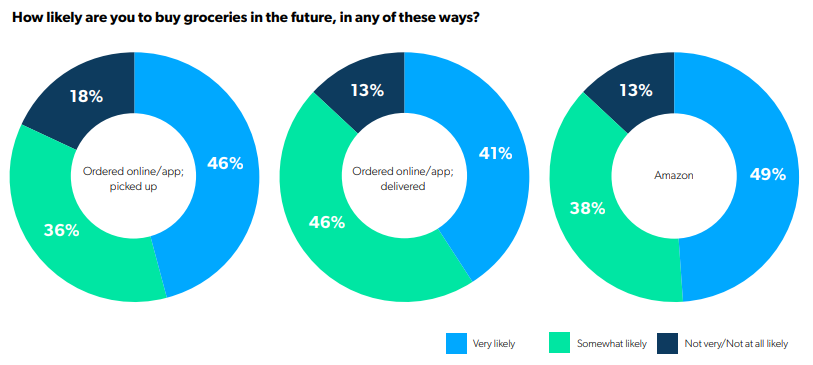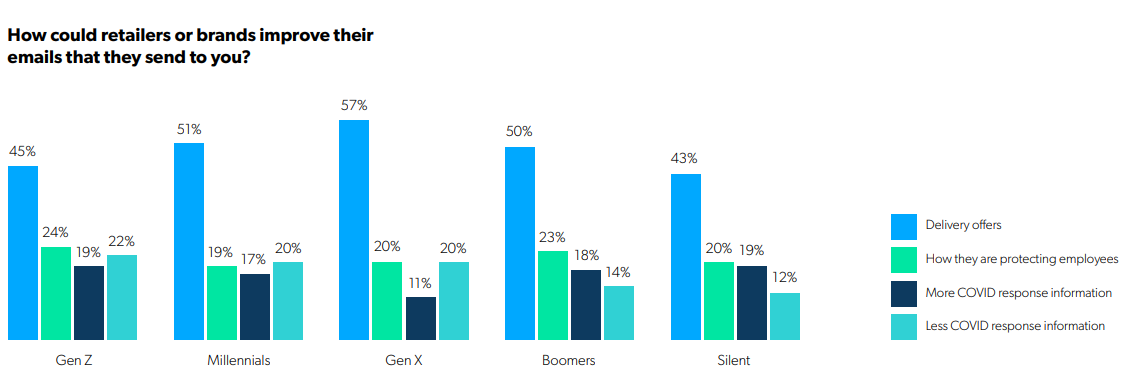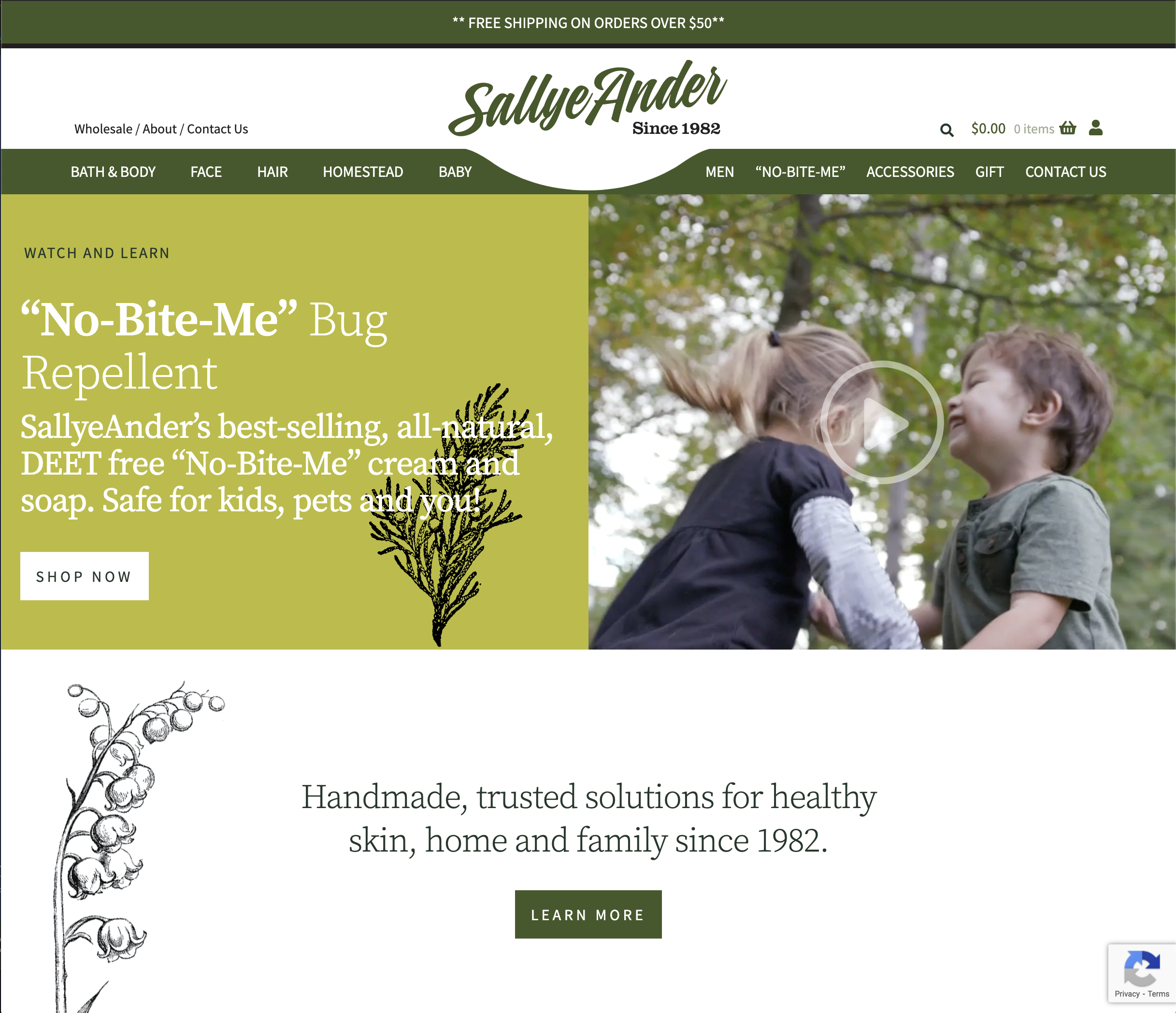States such as New York are largely open for business and that means shoppers are slated to return, right? While data suggests retail sales are improving, some experts are hedging their bets. Speaking to CNN, one CEO said the surge was likely spurred by shoppers who were isolated for months and itching to return.
And yet the good times may not last. On the other end of the spectrum are online sales, which, according to a June report by TechCrunch, leapt 18 percent in 2020. While this doesn’t make up for total sales losses, the author notes, a spike in online sales points to a long-forecasted trend: consumers are expected to increasingly migrate to web over in-person sales.
It’s important that brands be there to capture this transition. Creating or enhancing your e-commerce site is a vital factor to surviving and thriving during this pandemic.
Covid-19, retail & evolving shopper preferences
Covid-19 has led to a rapid shift in consumer shopping behavior, with more than 50% of consumers in a recent Epsilon survey indicating that the pandemic’s impact on the way they shop will last well into the fall.
The economic uncertainty associated with reduced income and/or job loss is contributing to diminished consumer spending. Fully 80% of respondents in the Epsilon survey are delaying purchases until the current crisis is over.
The impact of the virus varies depending on the category—this is true of what consumers are buying, but also how they’re buying it.
For example, sales of consumer-packaged goods (CPGs) increased by 9.5% during the initial months of the pandemic, with curbside pick-up and home delivery increasing. Even so, most consumers still purchase their groceries at the store, albeit by taking fewer trips to eliminate exposure. Additionally, more than 80% of consumers indicated they are likely or very likely to repurchase/reorder groceries online via a website/app or delivery or from Amazon.
Source: Epsilon.com
For retail purchases that include non-grocery items, consumers have been forced to move many of their purchases online because stores are closed or their hours/capacity are reduced.
Unsurprisingly, Amazon is the top online retailer for non-grocery-related purchases. This is true for all generations, as reported in the Epsilon study, although younger generations (Gen Z through Gen X) gravitated to Amazon the most. Other top online retail destinations include mass merchandisers (e.g., Overstock), gardening/outdoor websites, and Costco.
Consumers are engaging with brands primarily via email about special delivery offers. To a lesser extent, consumers read brand emails to learn how stores are protecting their employees. Gen Z, Millennials, and Gen X tend to want less COVID response information while Boomers and the “Silent” generation tend to want more, as illustrated in the following chart.
Source: Episolon.com
In terms of going back into stores, about 40% of consumers—regardless of age—indicated they will feel safe when the government says it’s safe. About 30% (40% of Boomers) said they would feel safe going back when there are no new cases in their state for several weeks. A smaller percentage of respondents indicated they would go back as soon as the stores reopen or when there are no new cases in their state for a few days.
What is an E-Commerce website?
Simply put, an e-commerce website is a website that enables the buying and selling of products and services. Amazon is currently the top e-commerce platform. With over 150 million Amazon Prime subscribers, Amazon made over $75 billion in sales revenue in Q1 2020. Other top online retailers include Walmart, eBay, Target, and Etsy.
Amazon’s been around for 25 years and has morphed from a relatively simple online bookstore, to an AI-driven retail platform that sells everything from electronics to clothing to groceries and home goods. The typical e-commerce website is essentially an online catalog of products that users can browse, select, and purchase via an online shopping cart/checkout gateway.
Most bricks-and-mortar brands have e-commerce websites, as evidenced by the fact that some of the top online retailers are well-established big box stores like Walmart and Target. There are also many pure-play online websites like Amazon and eBay where users can only purchase products online (for most items – Amazon owns Whole Foods).
While overall retail sales are expected to drop by 10.5% this year or a total of $4.8 trillion, U.S. e-commerce sales are—as noted above—projected to increase by 18%. To capitalize on this new trend, it’s important for retailers to have a strong e-commerce website.
What makes a successful e-commerce site?
Amazon has set an extremely high bar when it comes to consumer expectations for an exceptional online shopping experience. Their success over the last two and a half decades is due to a variety of factors, all of them aimed at making their shoppers happy. When taking a page out of Amazon’s book, here are some things to consider:
- User-friendly design: Over two-thirds of consumers say the most important feature of a good website is that it’s easy to use. That means simple, straightforward navigation, a modern, mobile-friendly design, and high quality, compelling images and videos. Images must be quick to load since slow-loading images will see a bounce rate of nearly 40% according to Adobe.
- User reviews/ratings: Amazon pioneered user reviews to help shoppers evaluate products they can’t see or touch in person. Now, user reviews are ubiquitous on most e-commerce websites, with about 95% of shoppers reading them prior to making a purchase.
- Images & videos: In addition to product photos, e-commerce websites that feature videos of products, images of people using and interacting with products, and user-generated content such as Instagram photos from customers can help increase sales. One retailer found that adding Instagram photos to product pages increased checkouts by 24%.
- Seamless checkout with clear shipping information: To understand what makes a successful checkout process, it’s helpful to know the top causes of online shopping cart abandonment. The main reason (by far) that people abandon their shopping carts is due to unexpected shipping costs. Other top reasons include cost of items, the fact that the user was just browsing, and the website navigation was too complicated. While some of this can’t be solved with good design, adding clear shipping costs/information to the checkout process is a good place to start. Retailers should also minimize the amount of steps it takes to complete the checkout process, include a guest checkout option, and make it easy/obvious for the shopper to use coupon and gift codes.
- Secure shopping is a must: Credit card fraud is a big issue, with nearly 50% of people in the US impacted in the past five years. It’s incredibly important to ensure that your checkout process is secure or people simply won’t buy from you.
Partner With Ashworth Creative
At Ashworth Creative, we know how to make an exceptional e-commerce site. Handmade home and family retailer SallyeAnder worked with our agency to produce a new website in 2019. The website recently received a Grand prize in the e-commerce category for its creativity and effectiveness.
What sets SallyeAnder’s website apart from other sales-oriented platforms is its content, design and development which effectively communicate a boutique, small-town charm, while showcasing the beauty of their environmentally friendly handmade soaps and personal care products.
The website’s color scheme reflects an organic, natural ambiance and contains straightforward navigation that effectively guides shoppers to the appropriate department in as few clicks as possible.
Our e-commerce experts can work with you to create a user-friendly shopping experience even if you’ve never sold your products online before. This is as true of brands like SallyeAnder as it is for industrial manufacturers and other producers of goods.
Phillippa Ewing, Ashworth Creative’s senior Marketing Strategist, had this to say about the importance of having an e-commerce presence, “Several of our manufacturing clients have had a sharp drop in sales through retailers because of COVID. Each experienced more than a 70% drop in business at the outset of the pandemic. However, because they had active e-commerce websites, they soon picked up any business they’d lost offline through the website.”
Will there be a permanent boost to online sales? That remains to be seen. We’ve heard anecdotal evidence that those manufacturers who didn’t have the capability of selling online are experiencing difficulties.
Says Ewing, “This also highlights the need for ongoing attention to SEO. If people want to purchase your product and stores aren’t there to provide it, they need to be able to find you online and good SEO is essential.”
With the current surge in COVID cases in the US, it’s unlikely that consumer shopping behavior is going to change soon. People are looking to purchase online from their favorite stores and brands now more than ever. To learn about our e-commerce website design and SEO services, or for a free 30-minute consultation, please don’t hesitate to contact us today.




